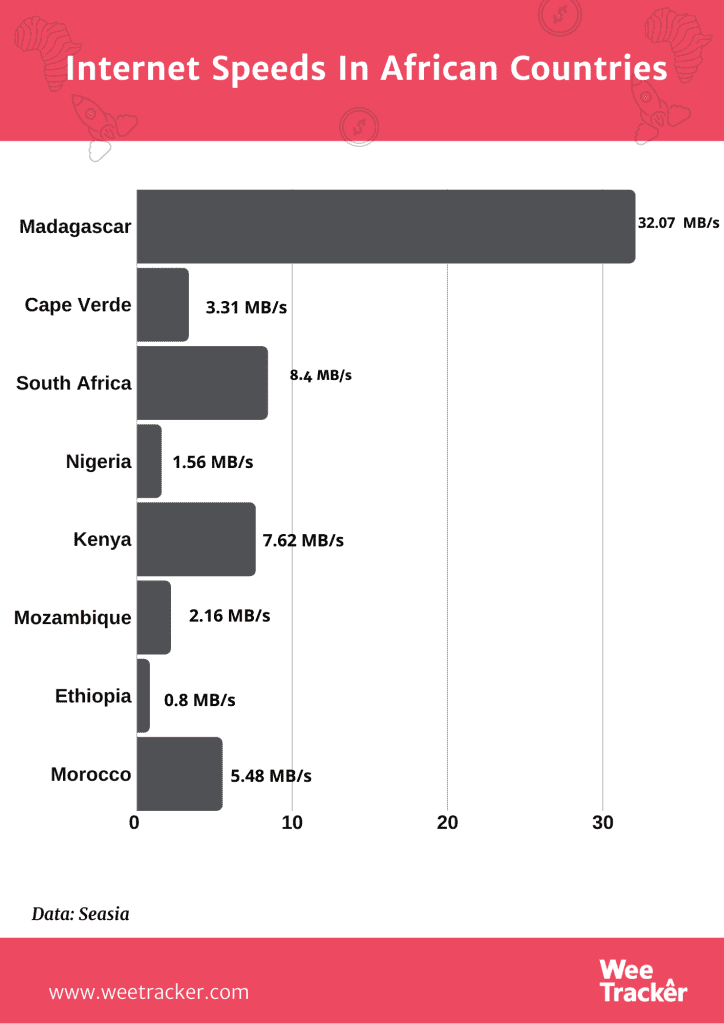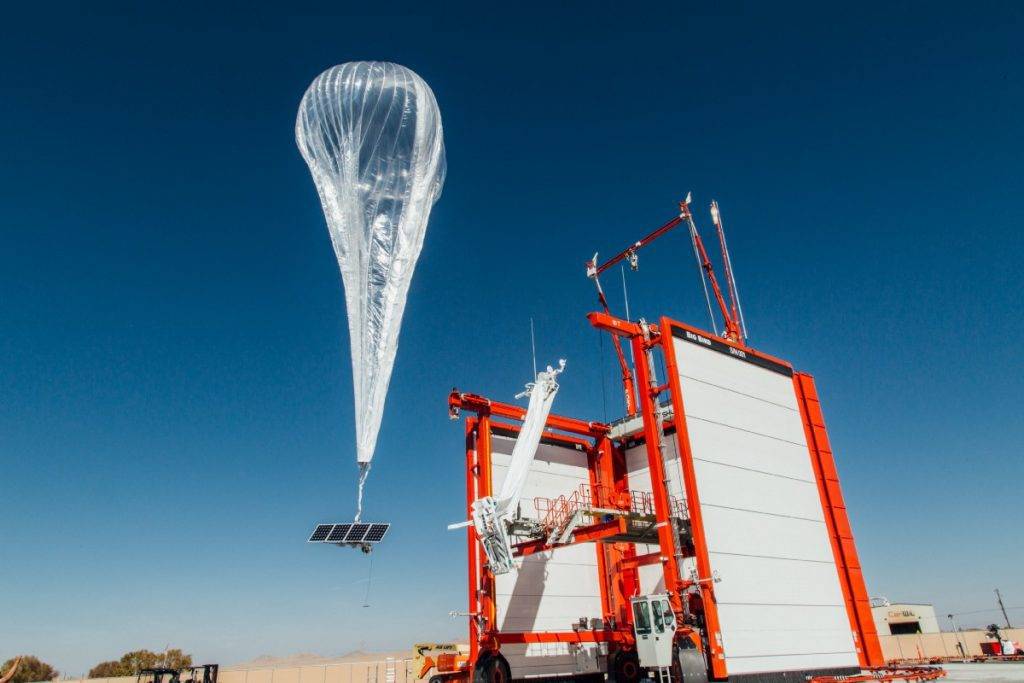Can Balloons Lift Africa Out Of Its Internet Struggles?

After Kenya, Mozambique is the next African country to get Alphabet’s Project Loon, a high-altitude balloon-based initiative that creates aerial wireless networks with up to 4G-LTE speeds.
Africa is presently on record to have the fastest-growing mobile telecommunication market. However, the continent has the lowest mobile penetration, with major developments majorly happening in cities and urban centers.
The deployment of Project Loon appears to start with the countries with the lowest internet speeds in Africa. The possibility, in the future, is that Alphabet’s internet initiative might better mobile penetration, since it’s starting right from the grassroots.
First, Kenya
In April 2020, the Kenyan government approved for Google and Telkom Kenya to deploy the balloons to provider faster internet to Kenyans countrywide as they work from home during the Covid-19 outbreak.
Typically, the project provides internet connection to areas that are underserved. With the aid of solar-powered cellular network gear on board, it replaces the need to install permanent tower infrastructure in places where that option is either impractical or unaffordable.
The importance of the approval by the Uhuru Kenyatta administration is that Google and Telkom Kenya will be able to proceed with the commercial rollout of the project. This will go in a long way to help the East African country attain universal 4G coverage.
Kenya has an internet speed of 7.62 megabytes per second, landing it a bottom ranking among its African peers for fixed broadband connections. The present best in Africa is Madagascar, with a download speed of 32.07 megabytes per second.

Low internet speeds are prevalent in rural Kenya, where the lack of telecoms infrastructure and limited phone access comprise the main factors. This has prompted Project Loon to start off with such regions.
Then, Mozambique
It is a long way from Kenya, but the Southern African nation of Mozambique could need an internet revamp more, especially in its ruralities. In partnership with Vodacom, Alphabet’s Google is taking internet to the skies of Cabo Delgado and Nissa.
These two vast Mozambican provinces currently have spotty or no internet coverage. The service, according to Loon, will work for anyone with 4G-VoLTE and a SIM card, enabling them to connect like they would to a regular cell tower.
Loon also said it is unlikely that a user will know they have connected to the service, except that they may have a signal in a location where it previously did not exist.
Loon CTO Salvatore Candido blogged that the system utilizes software to automatically create a map that optimizes the flight path based on weather forecasts.
In 2012, internet users in Mozambique accounted for 4.8 percent of the country’s population, growing 372.5 percent over the previous 5 years. According to speed tests, the country has an average 0.68 megabytes per second download speed, one of Africa’s lowest.
Vodacom is one of Africa’s largest carriers, providing service to tens of millions of people in multiple countries. “We view this as the first step to a larger partnership that will allow us to serve more of those users throughout Africa,” Loon CEO Alastair Westgarth said in a statement.
Much Needed
In recent months, Cabo Delgado’s telecoms transmitters have been repeatedly damaged by Islamic extremists. There is a current insurgency there which has claimed the lives of over 1,000 people since 2017.
The most recent attacks were blamed for the disruption of internet access in parts of the province. Nissa province, on the other hand, is the poorest in Mozambique and home to a poaching-hit vast wildlife reserve.

Courtesy: Technology Review
With Loon’s floating cell phone towers operating miles above the ground, Vodacom will be able to expand mobile network access in the two provinces.
Cabo Delgado and Nissa have proven hard to service in the past, thanks to their vast logistical and geographical challenges. Low population density is also a huge factor.
But mobile internet is a pan-African problem. Despite having some of the world’s lowest speeds, the continent is home to the most expensive data on the planet.
Many of the region’s countries still have bandwidth as low as 64 kilobytes per second. Downloading a 5GB movie took 734 minutes in the Republic of Congo, 850 minutes in Ethiopia and 1,342 minutes in Equatorial Guinea.
In Singapore, contrastingly, it takes about 11 minutes and 8 seconds to download a typical 5GB high-definition movie.
Infrastructure Deficit
One of the main causes of Africa’s internet problems is the lack of supporting infrastructure. While cell towers can be found in the continent’s urbanities, its rural areas remain underserved.
In semblance to a majority of architectural work, telco masts need to meet certain constructional requirements, inclusive of which is location choice and risk analysis.
In a place like Ghana, it is possible to see 10 masts in close proximity to one another. While it does not necessarily improve the quality of the internet, it poses huge environment and physical hazards to humans.
Thanks to unregulated construction in many African parts, masts are erected in places that are very close to homes and hilly grounds in mega cities. Not to mention that masts are significantly expensive to set up.
Floating balloons in the sky reduces health hazards and boosts connectivity by lengths regular masts are unable to. So, it’s easy to see why Google’s Loon is a better pick for Africa, starting from ruralities.
African service providers believe that it is impossible to roll out a network service that would cover an entire country. Nevertheless, emerging technologies, like Loon, are trying to bridge the gap between internet costs and speeds.
Additionally, they offer the possibility of developing communication networks in a way that does less harm to the environment and humans at large.
Going Forward
In June 2014, Linoca Gayoso Castelo Branco, a school in Brazil, was able to connect to the internet for the first time ever with Project Loon’s LTE radio equipped balloons in conjunction with a ground-based antenna on the school’s roof.
If Project Loon is successfully rolled out in more places in Africa, it won’t just increase internet speeds by a lot. The service will also increase the number of internet users, since it is bringing it majorly to the underserved regions.
According to Google, the connectivity provided by each balloon should cover an area of approximately 25 miles (40 kilometers) in diameter on the ground, with hundreds of people potentially able to connect to a balloon at the same time.
The Loon team has also increased the data rate by 10 times since the beginning of the project, expecting coverage to be on par with typical LTE 4G network speeds.
Photo by Alex Holyoake via Unsplash.
